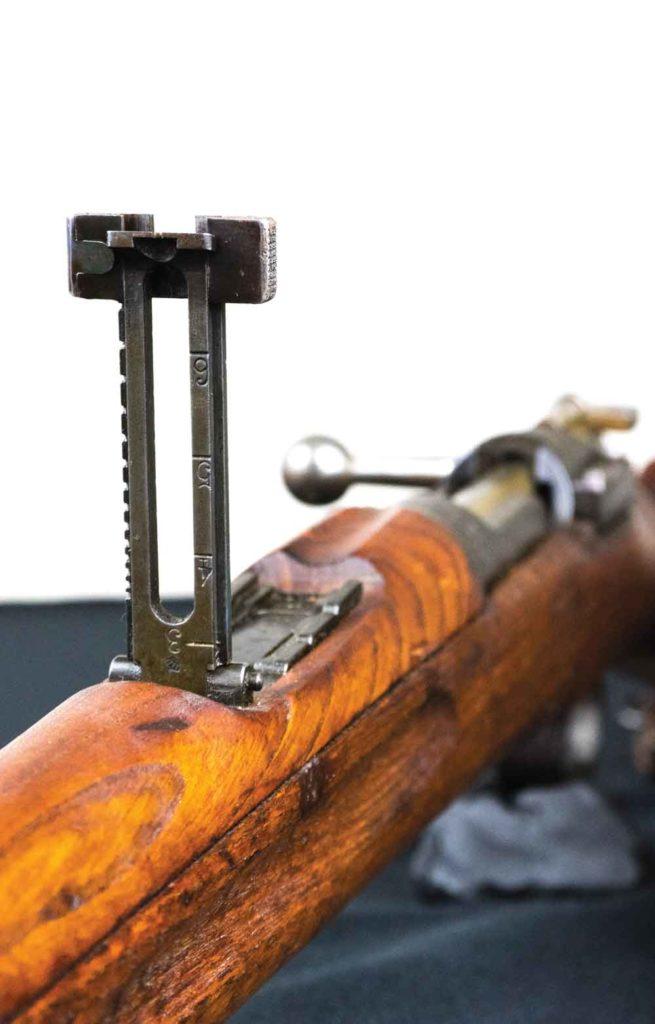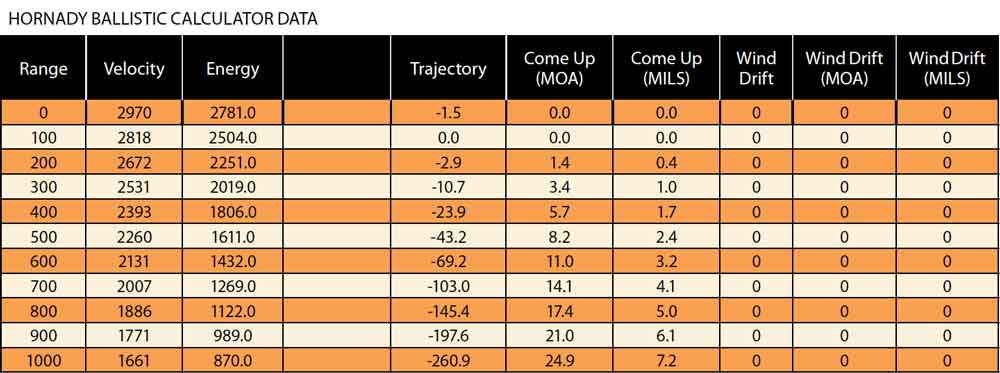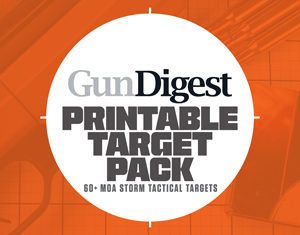
Even with the recent ascent of 6.5 cartridges, the original 6.5×55 seems to be overlooked. But this old-timer is more than capable of going the distance.
What makes this old Swede so special:
- The 6.5×55mm was developed in the Scandinavian countries in 1891 as a military service cartridge.
- While popular in Europe, the cartridge did not catch on in the U.S., given the lack of rifles.
- The attraction of the 6.5×55 is it's mild recoil and superb down-range performance.
- Ample bullet selection — 90 to 160 grain — gives the cartridge plenty of versatility and makes it a gem for reloaders.
- A higher sectional density gives the 6.5 better penetration than other caliber bullets of a similar weight.
- And near best-in-class ballistic coefficient means the bullets it pushes maintain their velocity and resist wind defection.
The 6.5 fever is real.
Thanks, lately, to the astounding success of Hornady’s superb 6.5 Creedmoor, hunters, competitive and tactical shooters are catching the 6.5 fever like school kids catch the flu. Unlike the flu, however, I doubt anyone is looking for a cure for the cronic 6.5 sickness.

The 6.5 fever, as it were, isn’t a new discovery. In fact, the 6.5 caliber has been around longer than anyone reading this story without a Ouija board. The global 6.5 success story is a tale told by many great 6.5 bullet-topped cartridges, such as the short-action .260 Remington, the over-caffeinated 26 Nosler and .264 Winchester Magnum, the bulldog short powerhouse 6.5 Remington Magnum, the AR-15-compliant 6.5 Grendel and the Swedish military service rifle sensation, the 6.5×55.
In fact, the 6.5 bullet has a long history of military service, seeing use in other military service rifles besides the 6.5×55, including — and I’m sure I will miss a few — the 6.5×54mm Mannlicher-Schönauer, 6.5×58mmR Krag–Jørgensen, 6.5×58mm Portuguese, 6.5×53mmR Dutch Mannlicher, 6.5×50mm Arisaka, and the 6.5×52mm Carcano, which well-educated historians of the John F. Kennedy assassination know all too well, as the Warren Commission stated it was a 162-grain round-nosed bullet from a 6.5x52mm Carcano fired from a surplus Carcano Model 1891/38 short rifle which took Kennedy’s life.
Of all of today’s more popular 6.5 cartridges, though, the original 6.5×55 seems to be the least talked about, and for the life of me, I just don’t understand why. I’ve owned four, and outside of a dangerous game hunt in Africa or Alaska, the 6.5×55 is probably all the rifle I ever needed to hunt anything and everything I ever wanted. Every rifle I owned — which included two CZs, a Steyr and an honest-to-God Swedish M96 Mauser — carried, shot and handled well. My current in-house 6.5×55, a CZ 557, is one of the softest shooting and fastest handling big game rifles in my safe, which is why I bought the loaner gun after just one day of load development testing for this story.
CZ-USA’s Jason Morton said the 6.5×55 still sells surprisingly well in the U.S. market, but those familiar with the 6.5×55 aren’t surprised. After all, the 6.5 bullet, which has excellent aerodynamics and target penetration from the 55mm case, gets pushed to good velocities in low-recoiling accurate rifles, which, as many shooters will tell you, are the main ingredients in any ballistic recipe for success. This recipe is and was a good idea not just for shooting the enemy, which is why the Scandinavians developed it as a military service cartridge way back in 1891, but also for shooting paper targets, coyotes, deer, elk, black bears and even moose.
More To The Story

To help unravel why the 6.5×55 didn’t catch on as well in the U.S. as other 6.5 cartridges, I reached out to some experts in the ammunition community. My first stop was with the good folks at RUAG, a European-based company, which includes the well-known ammunition manufacturer Norma. Norma certainly doesn’t neglect the 6.5×55 — it offers seven factory-loaded choices for it.
According to RUAG, it all comes down to rifle availability, timing and overall ammunition support.
“It’s my understanding that surplus military rifles did not reach the U.S. market until the 1950s, and the availability of ammunition was limited until the 1990s,” said Amund Skoglund, Commercial Director North America, RUAG Ammotec USA, Inc. “Whereas in Scandinavia, both rifles and ammunition have been readily available since the early 1900s. Almost every hunting and/or shooting household in Scandinavia owns a 6.5 due to its versatile applications.”
Skoglund’s take makes a lot of sense. Here in the U.S., after WWII, lots of shooters turned surplus Mausers into accurate and inexpensive target and hunting rifles. Think .30-06 Springfield, .270 Winchester, etc. The European built and fed 6.5×55 rifle and its ammunition just wasn’t available stateside. Which is too bad, because over in Europe, the 6.5×55 was proving to be as useful as, well, a Swiss-Army knife. It still is …
“There’s not much you can’t do with a Swede,” said Skoglund. “In Scandinavia, it qualifies (with 156-grain bullets) to be a class 1 weapon, meaning you can hunt all the large game including brown bear, moose, reindeer, red deer, wild boar, etc. We do recommend using a bonded bullet on large game since the shoulder joint on a moose can be hard to penetrate with a cup-and-core bullet. In terms of African game, it’s an excellent choice for antelope; personally I would not hesitate to use it on oryx- and wildebeest-sized animals, but with a bonded 150-grain-plus bullet.”
A Sweet Shooter
One of the biggest reasons for the popularity of the 6.5×55 — and really of all 6.5 cartridges — minus maybe the 26 Nosler, the .264 Winchester Magnum and the 6.5 Remington Magnum, is that you don’t need a lot of gunpowder muscle to make a 6.5 bullet work. With less bite to the shooter’s shoulder, low-recoiling rifles go a long way toward enabling shooters to provide accurate and sustainable rounds downrange — whether the target is a 1,000-yard gong, a trophy-class white-tailed deer or someone who intends to do you harm. Skoglund gets right to the point of the 6.5×55 cartridge’s main advantage to hunters these days by stating the 6.5 x55’s ability to enable hunters to shoot with manageable recoil plays a key role in shooter success.

This particular rifle was
created in 1916.
“A lot of hunters won’t admit to it, but I am convinced that the success of this cartridge is due to its design (moderate velocities and great range of bullet weights),” said Skoglund. “Nobody likes to get punished by heavy recoil, and normally shoots better when not in pain (or waiting for a painful hit). Also, the availability of cheap surplus rifles that enables both target practice and hunting in one rifle helps the Nordic success of this caliber.”
All About The Bullet
Aside from low recoil, the next best part of the 6.5×55 is the bullet. In fact, some might say the 6.5 mystic is all about the bullet, and there are a lot of them. MidwayUSA lists 99 different 6.5mm choices of reloading bullets available, with weights ranging from a snappy 90-grain bullet all the way up to a 160-grain round-nose.
“The number of 6.5mm bullets make it great for reloaders, and the newer CIP (Permanent International Commission for the Proof of Small Arms) spec with the higher pressures for modern rifles helps expand the opportunity as well,” said Robin Sharpless, vice president of Redding Reloading Equipment. Sharpless added that the new name of the 6.5×55 is now the 6.5 SCAN, “as Sweden, Norway, etc., settled on a single standard.”
Of these bullets, the ones in the 140- to 150-grain range with exceptionally high ballistic coefficients (BC) are the ones that enable the 6.5 caliber, whether it’s a 6.5×55 SCAN, 6.5 Creedmoor or the 26 Nosler, to outperform most other non-6.5-caliber cartridges, especially regarding penetration. Ballistically speaking, what makes the 6.5 bullet family have the magical penetration reputation it does versus other calibers? To find out, I asked Hornady’s own Neal Emery.

“It’s definitely a 6.5 thing — all sectional density,” he said. “A controlled expansion bullet in .30 caliber weighing 140 grains would be rather short for its weight. A 140-grain controlled expansion bullet of the same construction in 6.5mm is going to be longer; therefore, it has a higher sectional density and will penetrate further.”
Handloaders can really make the 6.5×55 SCAN scoot. Public reloading data from Nosler, for example, gives handloaders quite a few choices. Published load data for the company’s magnificent 142-grain Accubond Long Range bullet, which, by the way, sports an impressive .625 BC, lists Alliant’s Reloder 22 as the most accurate powder in the manufacturer’s 23-inch test gun, but it states that Hodgdon’s H1000 got testers the most speed at an impressive 2,790 fps.
Hornady’s ballistic calculator (see accompanying chart above) offers the load data results to give us a general idea of what kind of flight trajectory you can expect based on the bullet’s BC and published muzzle velocity.
This is just one example of what modern powders, bullets and rifles are capable of with the 1891-era cartridge. Mathematically speaking, the gray-haired 6.5×55 SCAN is more than capable for today’s hunters. The scientific fact of 6.5 bullets flying farther and faster per powder per capita than most other bullets due to its inherently high BC figures is becoming more well-known to shooters who are devouring the 6.5 bullet market.
Based on MidwayUSA’s website data as of January 2018, the most popular 6.5 load is Hornady’s new 147-grain ELD Match bullet, which boasts a slick .610 ballistic coefficient. Compare this to Hornady’s 160-grain round-nosed 6.5 offering, which has a very pedestrian BC of just .283.

What exactly is ballistic coefficiency and why is it so useful? According to noted ballistics expert, Bryan Litz, of Berger Bullets, BC is explained like this: “Without getting into the math, I’ll define the ballistic coefficient in words as: The ability of the bullet to maintain velocity, in comparison to a ‘standard projectile.’ A high-BC bullet can maintain velocity better than a low-BC bullet under the same conditions. All measures of ballistic performance including drop and wind deflection are related to the bullet’s ability to maintain velocity. In short, the higher the BC, the better the all-around ballistic performance of the bullet will be.”
Brand New Rifle Options
Finally, in 2018, shooting a 6.5×55 SCAN in a brand-new rifle, like the CZ 557, gives me quite a few manufacturing advantages over the 6.5×55-loving crowd back when the 6.5×55 pulled its first tour of Scandinavian duty. CZ certainly isn’t the only manufacturer chambering for the 6.5×55 today.
Blaser, CZ, Sauer & Sohn, Steyr, SAKO/Tikka, Howa and even Barrett currently offer rifles chambered in it, and I’m sure there are others. If you need factory loaded ammunition, there’s no shortage of help either with manufacturers such as Federal, Swift, HSM, Winchester, Nosler, Sellier and Bellot, Lapua, Prvi Partizan, RUAG Ammotec, Remington Arms and Hornady all offering loads.
While I doubt the dedication to craftsmanship is better now than it was with the superb gun makers who built my 1916 M96, today’s firearms manufacturers simply have better tools and materials, and hundreds of years of experience to create better rifles. CZ’s 557 is a fine example of this evolution in firearms manufacturing. Instead of pushing a 6.5 bullet down the 29-inch barrel of my Carl Gustaf-built 1916-era M96, which is a cock-on-close, clip-fed, wood-stocked military service rifle, I’m pushing different flavors of 6.5×55 SCAN ammunition down a 20.5-inch barrel, in a CZ 557, which is a cock-on-open, blind magazine fed, synthetic-stocked hunting rifle.
Despite my 6.5mm first love, the 6.5×55 SCAN, Emery helped me understand why the 6.5 Creedmoor zipped right by the 6.5×55 and even the .260 Remington in sales as well.

“The Creedmoor has quite a few things going for it. It’s a true short-action cartridge that allows long, heavy bullets to be seated out. The .260 Rem. requires the same long, heavy bullet to be seated farther into the case or the use of a long action. The 6.5×55 is even longer. The Creedmoor also benefits from close adherence to both the chamber design spec and the ammunition spec — everyone essentially makes it the same.”
While many American shooters might forget about or simply ignore the 6.5×55 SCAN as a superb hunting cartridge, I can assure you this 6.5-caliber cartridge will be the last thing any wild game you choose to shoot remembers. Regardless, the ongoing debate over not just which 6.5 cartridge is best, but even what hunting cartridge is best can be settled once and for all by modifying a quote about dogs by W.R. Purche: Everyone thinks they have the best rifle cartridge, and none of them is wrong.
Editor's Note: This article originally appeared in the April 2018 issue of Gun Digest the Magazine.

Next Step: Get your FREE Printable Target Pack
Enhance your shooting precision with our 62 MOA Targets, perfect for rifles and handguns. Crafted in collaboration with Storm Tactical for accuracy and versatility.
Subscribe to the Gun Digest email newsletter and get your downloadable target pack sent straight to your inbox. Stay updated with the latest firearms info in the industry.

![Best Concealed Carry Guns In 2025 [Field Tested] Wilson Combat EDC X9S 1](https://gundigest.com/wp-content/uploads/Wilson-Combat-EDC-X9S-1-324x160.jpg)


![Best 9mm Carbine: Affordable PCCs [Tested] Ruger Carbine Shooting](https://gundigest.com/wp-content/uploads/Ruger-Carbine-Shooting-100x70.jpg)
![Best AR-15: Top Options Available Today [Field Tested] Harrington and Richardson PSA XM177E2 feature](https://gundigest.com/wp-content/uploads/Harrington-and-Richardson-PSA-XM177E2-feature-100x70.jpg)

Totally agree with the article. I use a M96 Swedish Mauser for Combined Service Matches here in Australia and a CZ557 Deluxe in 6.5×55 for hunting. This allows me to reload for the CZ at the higher end of the 6.5×55 capability and have not regretted my choice. If I ever have a requirement for a short action magazine feed bolt action rifle I would not hesitate to adopt the 6.5 Creedmoor..
I own a Tikka T3X Hunter L.H. in 6.5 x 55 and I shot a 3 shot group at 200 yds measuring 7/16 in. The old swede doesn’t take a back seat to anyone!
I miss a mention of the Norwegian 6.5 Krag-Jörgensen. That is, I believe, the most used (in rebuilt version) hunting rifle in Norway – and therefore Scandinavia. The Norwegian National rifle Association (Det Frivillige Skyttervesen) was built around this rifle in the end of the 19th century (1893). It’s mission statement was (is) “to contribute to the practical shooting ability of the Norwegian people, to improve its capabilities for the defense of the country”.
The Germans (in 1940) hated the 6.5 Krag for its long-accuracy and low report which made the shooters difficult to localize.